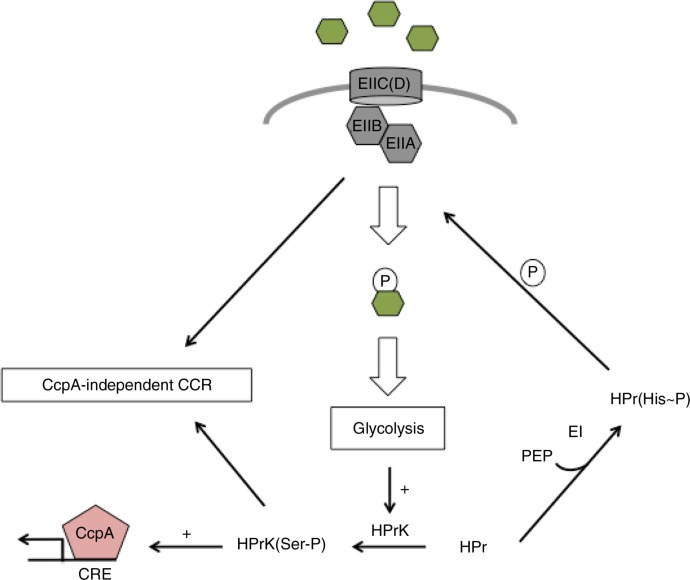Fig. 1.
S. mutans has evolved elegant strategies for coping with the diversity and availability of nutrients present within the oral cavity. When a preferred carbohydrate source, such as glucose, is present in abundant quantities, the elevated movement of metabolites through glycolysis profoundly alters many cellular properties. For instance, the kinase activity of the HPr kinase/phosphatase (HprK) is stimulated leading to an increase in the serine-phosphorylated species of HPr [HPr(Ser-P)]. HPr(Ser-P) acts as a co-factor of the major regulator CcpA to repress transcription of metabolic genes containing a catabolite response element (CRE) in their promoter regions, or in the cases of CcpA-independent CCR, directly affects transcription of genes associated with catabolism of non-preferred carbohydrate sources, a process that may also require certain PTS permeases. As the supply of available carbohydrate is diminished, the reduced quantity of readily metabolizable carbohydrate translates to a lower abundance of HPr(Ser-P). Without its co-factor, CcpA no longer functions as a repressor, and with lower levels of carbohydrate transport occurring, PTS porters remain predominately phosphorylated and play a less active role in CCR. Relief of repression by these factors allows for transcription of a variety of genes, including PTS porters, for sensing and accessing a diverse array of carbohydrate sources. Overall, PTS porters monitor the type and levels of carbohydrates present in the oral cavity, while the overall supply of carbohydrate in relation to cellular energy demands is monitored by the activity of HPr and CcpA.

